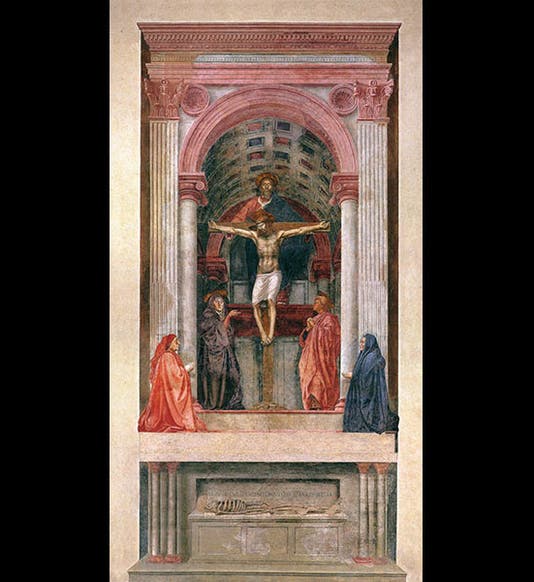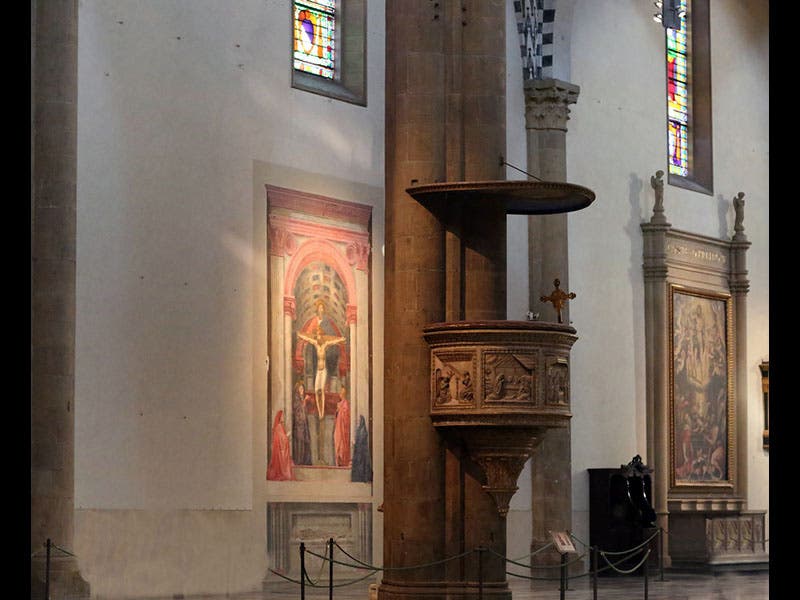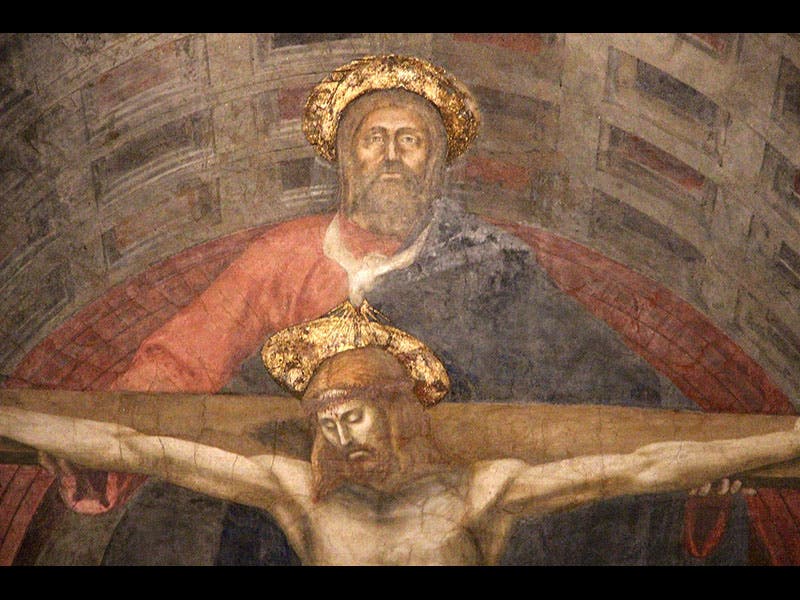Scientist of the Day - Masaccio
Masaccio, an Italian artist, was born Dec. 21, 1401. Masaccio is commemorated here because he painted the earliest surviving paintings that utilized the geometrical technique of linear perspective. The discovery of the rules of perspective was one of the great mathematical achievements of 15th-century Florence. We know that Filippo Brunelleschi discovered these rules around 1415, and we have contemporary accounts that tell us that Brunelleschi himself painted two panels that used his perspective techniques, one depicting the Florentine Baptistery and the other the Palazzo della Signoria. However, neither of those paintings survive.
Masaccio came to Florence from rural Tuscany in the early 1420s and fell in with the circle of Brunelleschi and Leon Battista Alberti. Brunelleschi must have passed on his discovery to Masaccio, because sometime around 1427-28, Masaccio painted a fresco that demonstrates, for the first time, what perspective can do to aid the artist in creating a pictorial space. The fresco is on the left wall of the nave of Santa Maria Novella in Florence, and it is called The Holy Trinity (first image). It depicts Christ on the cross, with God the Father above, and the Holy Dove in between. These three figures are set into a very realistic space, a chapel with a coffered barrel vault, flanked by Corinthian pilasters and Ionic columns. But this entire space is actually just painted onto a flat surface; the appearance of depth is an illusion produced by the perspective technique, as we can see if we pull back and observe the painting from an oblique angle (second image). Everything that looks like an architectural detail is painted on, and that includes the tomb below with the Memento mori skeleton lying on top (third image) and the coffered vault at the top (fourth image). It is a masterful work, beautifully composed and skillfully executed; the age of perspective has leapt into being, fully mature and ready to transform the face of Renaissance art.
Some historians of science see the invention of linear perspective as a very important event in the history of western science, since it taught a lesson that long ago had been hammered into the psyches of would-be students at Plato's Academy: “Do not enter here if you do not know geometry." The Renaissance lesson was: if you want to paint in perspective, you must first master mathematics, especially geometry. Many artists after Masaccio, such as Piero della Francesca, became highly-skilled mathematicians. Artists were the first to learn that if you wish to describe nature accurately, you must know the language of nature, which is mathematics. A century and a half later, Galileo would state it just that way, “the Book of Nature is written in the language of mathematics, and to read it, you must know the language,” and sixty years after that, Isaac Newton would demonstrate what can be achieved when one grounds a philosophical system in the belief that the laws of nature are mathematical. Little did Masaccio appreciate the extent of his legacy.
Dr. William B. Ashworth, Jr., Consultant for the History of Science, Linda Hall Library and Associate Professor, Department of History, University of Missouri-Kansas City. Comments or corrections are welcome; please direct to ashworthw@umkc.edu.










